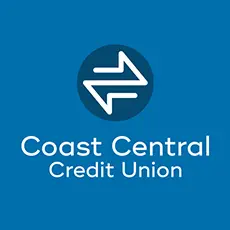Have you seen ads promoting the benefits of a HELOC and wondered, “What is a HELOC, anyway?” or “How does a HELOC work?” If so, you’re not alone—these are common questions for homeowners.
A Home Equity Line of Credit (HELOC) can be a valuable financial tool, so it’s important to understand how it can help you. Here are 10 key facts every homeowner should know:
- A HELOC lets you tap into your home’s equity. Calculate your home’s equity by taking your home’s market value and subtracting the amount you still owe on your mortgage. For instance, if your home’s current value is $450,000 and you owe $200,000, then your equity is $250,000. A HELOC lets you borrow against that equity—much like a second mortgage. Depending on the lender and your credit, your borrowing limit could be up to 80-85% of your home’s equity.
- You can use HELOC funds for a variety of needs. One of the best ways to use HELOC funds is for improvements that add financial value to your home. You can also use the money to consolidate debt, establish a safety net for emergencies, pay educational costs, and finance significant life events.
- Compared with other loans, a HELOC typically offers a lower interest rate. Because a HELOC is secured by your home, there’s less risk to the lender than with unsecured options like credit cards or personal loans. That’s why HELOCs often come with lower interest rates compared to those other types of borrowing.
- A HELOC is divided into two phases. Depending on the lender, the draw period—during which you can borrow money—can last up to 10 years, and the repayment period—when you pay down the balance—can last up to 20 years.
- During the draw period, use a HELOC like a credit card. You can borrow as much or as little as you want—whenever you need it. During the draw period, you only make monthly interest payments on the amount you’ve used. Principal payments aren’t required, but because a HELOC is a revolving line of credit, any principal you repay becomes available to borrow again.
- During the HELOC repayment period, pay both principal and interest. Once the draw period is over, you can no longer borrow from your HELOC. During this period, you will make both principal and interest payments, gradually reducing the balance.
- Most HELOCs come with a variable interest rate. With a variable-rate HELOC, your interest rate—and your monthly payment—can fluctuate based on market conditions. However, some lenders offer various fixed-rate options for all or part of your funds.
- You might get a tax break when you use your HELOC for home improvement. Use your HELOC funds to buy, build, or significantly improve your home, and the interest may be deductible under IRS rules. Be sure to consult a tax advisor to confirm your eligibility.
- HELOC requirements include having at least 15-20% equity in your home. You also need a strong credit score, a solid payment history, a low debt-to-income ratio, and a reliable income.
- Always read the fine print of your HELOC agreement. A HELOC may come with additional expenses, such as closing costs, annual fees, and inactivity fees. Keep in mind that your debt is secured by your home. Borrowing more than your budget can afford, rising interest rates, or dropping home values can all pose risks.
Discover the Benefits of a HELOC for Yourself!
To celebrate its 75th anniversary, Coast Central Credit Union is offering a HELOC with a special rate. For a limited time, get a 3.75% APR promotional rate* in effect for nine months, with no points and no fees! Terms and conditions apply. Apply by June 30, 2025.
Ready to take the next step? Learn more and apply today!
Coast Central – Where YOU are central.
*Current variable rate is 7.50% APR.



